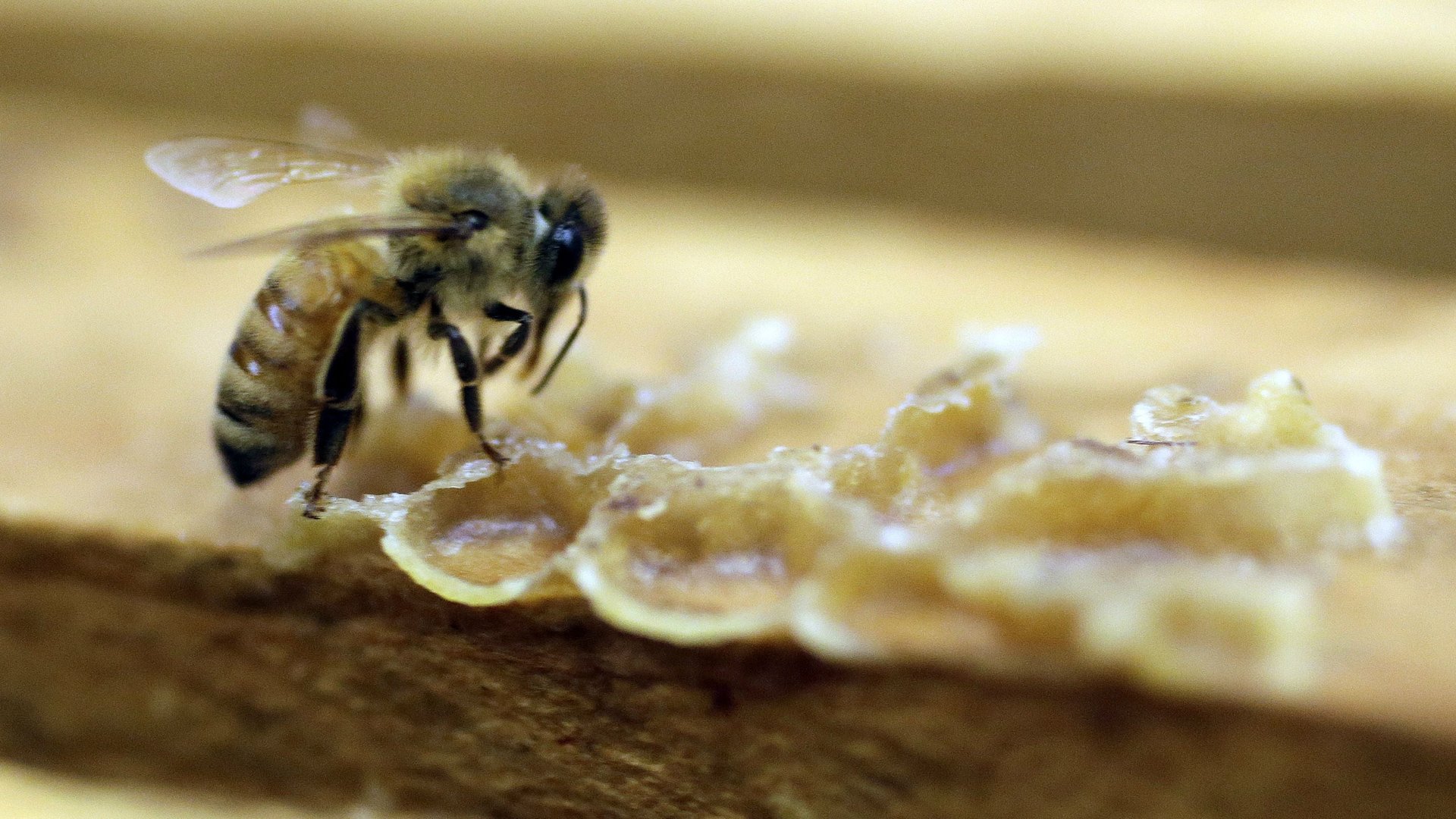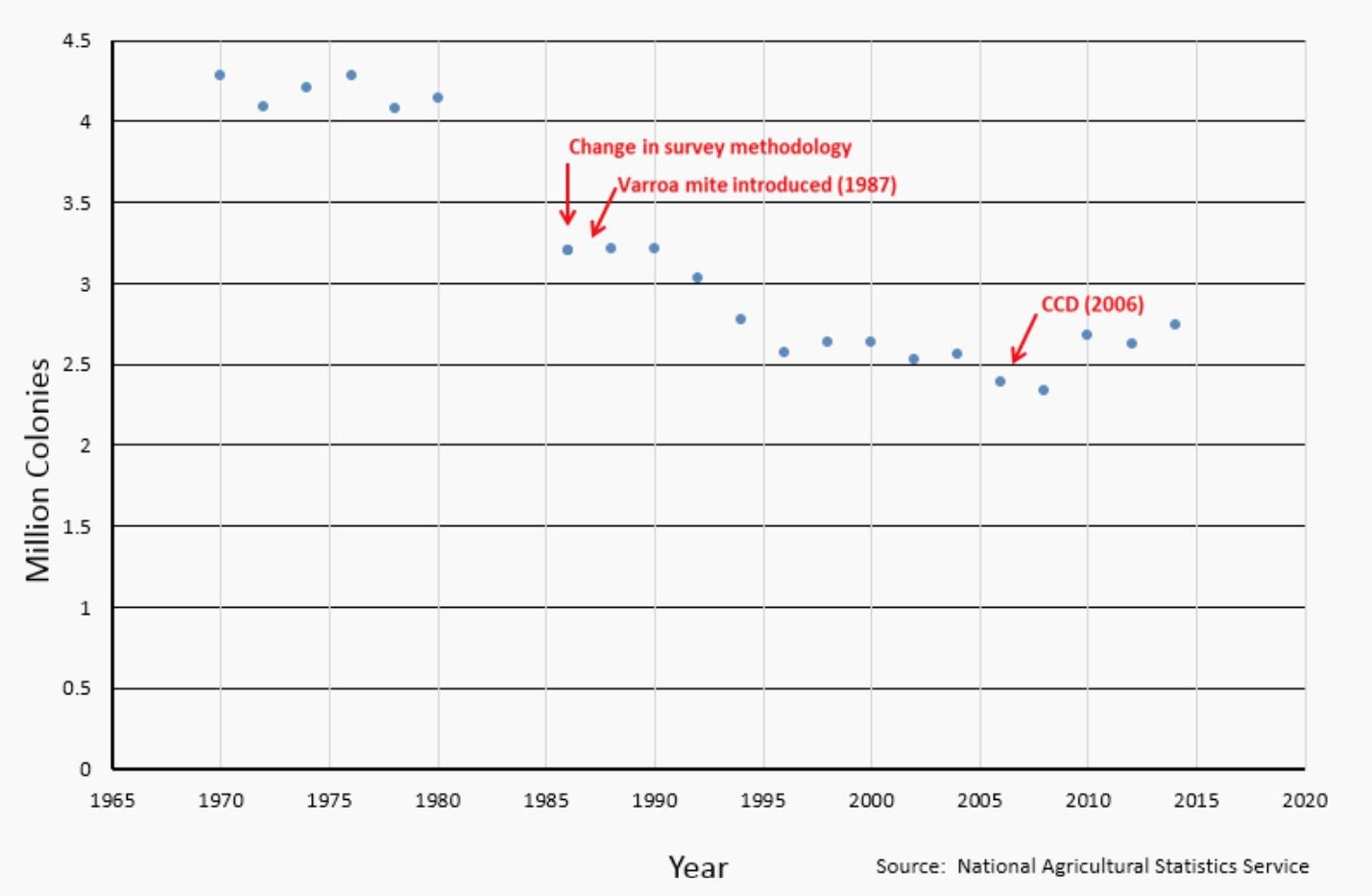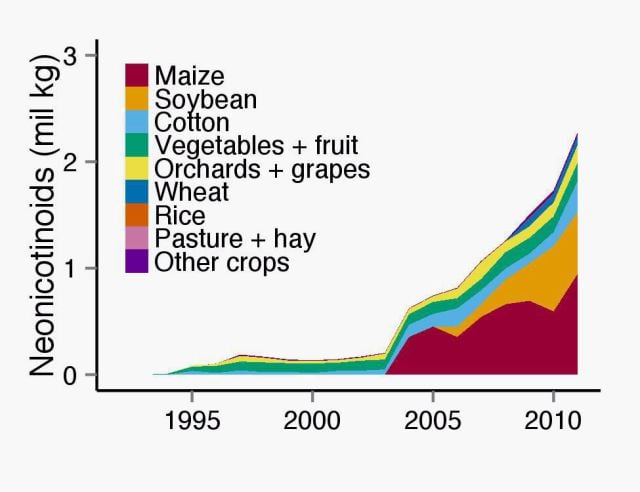After years of devastation, the American honey bee finally has the White House’s attention
The plight of the honey bee might finally be getting the attention it deserves. Earlier today, the Obama administration released the ”National Strategy to Promote the Health of Honey Bees and Other Pollinators” (pdf), its long-awaited plan to combat the host of factors that have whittled down honeybee colonies from 5 million in the 1940s to 2.7 million today.


The plight of the honey bee might finally be getting the attention it deserves. Earlier today, the Obama administration released the ”National Strategy to Promote the Health of Honey Bees and Other Pollinators” (pdf), its long-awaited plan to combat the host of factors that have whittled down honeybee colonies from 5 million in the 1940s to 2.7 million today.
Last winter, beekeepers lost an estimated 23.7% of colonies. The new strategy aims to slash winter honey bee colony losses to 15% within a decade. A key way it will achieve this is, simply, spending. The plan budgets an extra $34 million in spending on research and habitat expansion.

It’s about time. By pollinating crucial crops such as almonds and apples, honeybees provide a service worth $11.7 billion (in 2009 dollars) to US farmers each year. But the US government has until now declined to invest in researching crucial honeybee metrics, such as annual colony losses. The new funding will amend that, says Dennis vanEngelsdorp, an assistant professor of entomology at University of Maryland.
“Through pollination, honey bees are the third most important livestock in the country—after cows and pork but before chickens—but that’s not nearly reflected in the amount of research dollars that come to them,” he says. ”Hopefully this will be the start of rectifying that situation.”
Another crucial part of the strategy is its call to expedite products to tackle varroa mites, says vanEngelsdorp. Since their 1987 arrival in the US, the parasites have wreaked havoc on colonies, causing far more damage than the oft-bemoaned Colony Collapse Disorder (CCD).

The White House declined, however, to take action on one of the most controversial issues: use of insecticides called neonicotinoids. A growing body of research by scholars and other governments has linked the widespread agricultural use of neonicotinoids (“neonics”) to sickened bees. While stipulating that the Environmental Protection Agency (EPA) may halt approvals of new neonic uses, the plan declined to restrict their current application.

Of particular concern is that the EPA didn’t limit use of neonic-coated seeds; research suggests that since farmers often use these as a prophylactic “insurance policy” against the potential threat of pests, they’re being widely overused on key crops like soybeans, corn, and wheat, says Tiffany Finck-Haynes of Friends of the Earth, an environmental advocacy group.